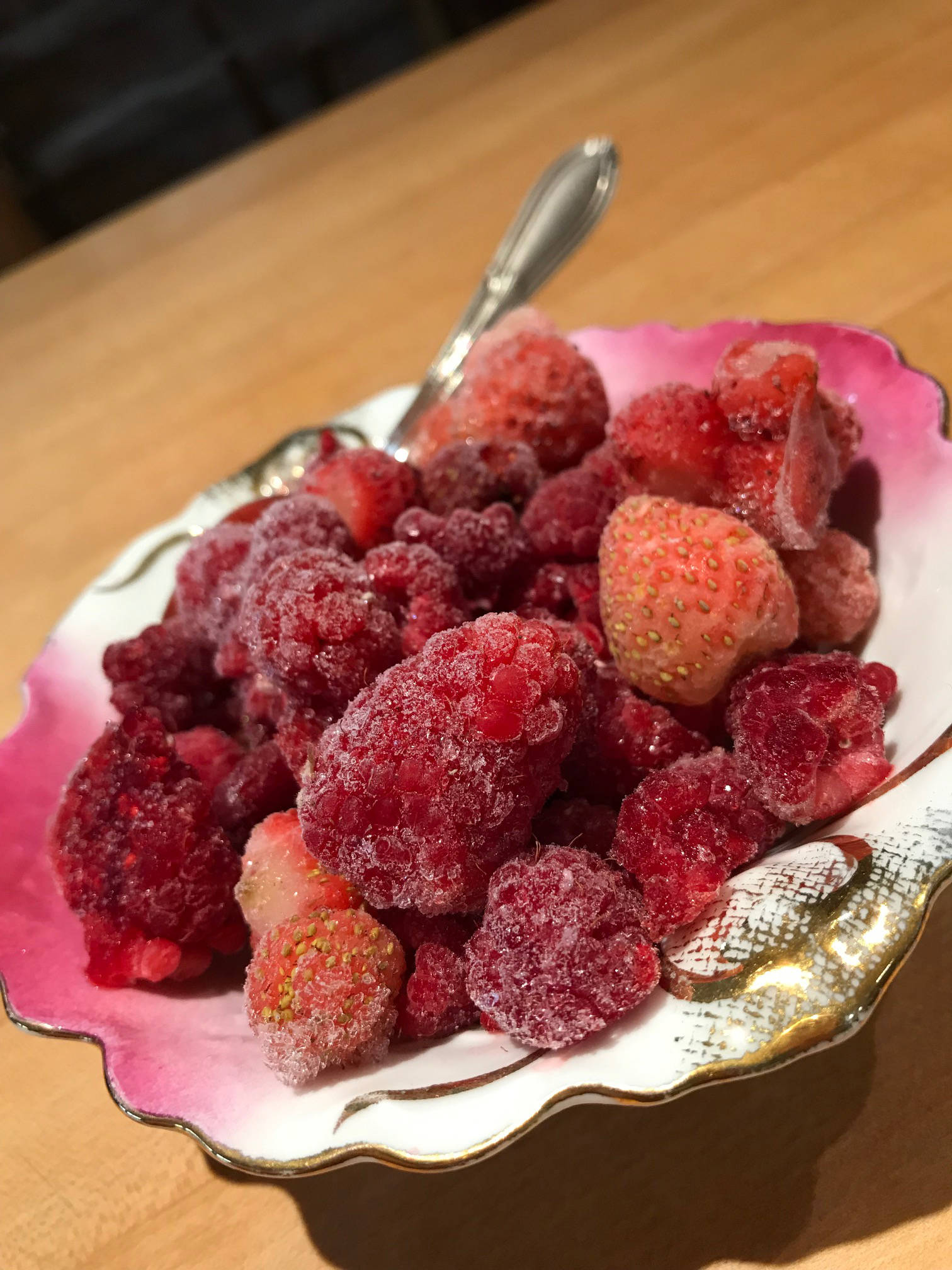I’ve been having some very intense thoughts about you — specifically, those of you who either don’t garden or have tried and failed.
The most recent earthquake that Anchorage bore the brunt of affected Homer’s food delivery system. And I hardly noticed. It was brought to my attention by friends bemoaning the lack of fresh produce. I had blissfully been carrying on — enjoying what our freezer and quasi root cellar had to offer. If you are someone who needs Belgian endive to make your life complete then you were, indeed, vexed.
Our freezer contains broccoli, romanesque cauliflower, spinach, chard, peas, leeks and Brussels sprouts. Strawberries and raspberries. The cooler that has been functioning all winter as our answer to a root cellar has carrots, beets and red cabbage. In baskets in the basement there are two kinds of onions, shallots and garlic, enough to offer us a varied diet with a little imagination. (I won’t go into the protein; this is, after all, a garden column).
Now that my attention has been drawn to the produce section I have been rather disappointed by what I’m seeing. I shop on Tuesdays and it would seem the offerings have been languishing in their appointed slots for quite some time. The fruit situation is interesting. There is the winter trilogy: oranges, apples and bananas. Methinks I would need to determine when produce shipments arrive to obtain the freshest possible. And, really, just how fresh is a head of broccoli that has been traveling from wherever to here?
Alaska has a six-day supply of food. Think about that. Think about something so very basic as food security. We are living at the edge of civilization, by choice. Now do something about feeding yourself/family.
Humans have been gardening since forever. It isn’t that big of a deal. You can read all the books/magazines/newspaper columns out there, but really all it takes is moving forward. Get the job done.
Oh, you say “I don’t have enough room/I live in an apartment complex/condo.” Problem solve. There is enough land that goes along with these arrangements that you can pull together enough other residents to plant a community garden. You live in a subdivision? Share your plot with a couple of neighbors. Water and weed together or on a rotating schedule. Throughout Europe this has been the mode forever. Why not here? Pick a spot. When the snow melts (it will, really), lay down some cardboard right on top of the grass — no need to till. Throw some topsoil on it, set out vegetable starts. Google “lasagna gardening” to get the idea. Anything to get you started. You WILL make mistakes, you WILL learn. Be fearless.
This little town is graced with several commercial greenhouses that will offer you, for a pittance, lovely vegetable starts. They offer varieties that want to grow here. Choose basic foods that you/your family will eat. Take advantage of the staff’s knowledge. Ask questions; they are there to help you.
The seed racks are out in several locations. Take advantage of them. Lettuce, radish, carrots, peas, spinach and chard can all be grown from seed; no need to buy seedlings. Just plant the seeds. Stay away from seed catalogs. The postage is outrageous. Once you get more gardening experience you will want to explore the possibilities that exist in the catalogs, but not now.
A vegetable plot doesn’t take much room. Think of the Victory Gardens in World War II. Think plot, not a farm.
When we spent a year in an apartment while we were between houses, I was impressed by the family of five that lived downstairs. They had a chest freezer in their living room. In their living room. An upright freezer would take up less floor space. Another thing for you to think about.
We have been challenged forever by the lack of a root cellar. This year we finally did something about it. The huge cooler that lives on the boat moved to the deck. We put carrots, beets and red cabbage in there. Early on it was too warm so we put solid ice packs with a high/low thermometer. I changed out the packs every day and the temperature stayed about 40 degrees. Then winter really came calling and we put a light bulb in there; again, all winter it stayed between 36 and 40 degrees. Our bumper crop of carrots pushed us to problem solve. It was bliss to have somewhere to put the harvest.
This is only February. This is the time to be thinking about how you are going to approach a vegetable garden. There will more columns in this space. I’m not through with you. I’ll do my best to coach you toward this opportunity to fend for yourself.
Carpe diem.
Note: The Homer Garden Club monthly meeting will be in the Best Western Bidarka meeting room at 2 p.m. Sunday, Feb. 17. Casey Matney, our Cooperative Extension agent, will speak on composting. Attend.
Rosemary Fitzpatrick is a longtime Homer gardener and has been writing Kachemak Gardener since 1990.


